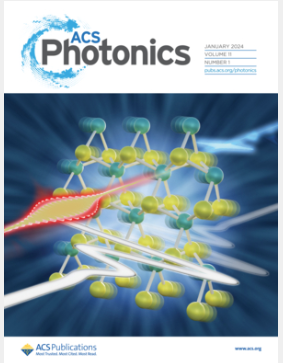Ultracompact Spatial Speckle Reconstructive Spectrometer Based on a Waveguide Corner with Chaotic Reflection
IF 6.7
1区 物理与天体物理
Q1 MATERIALS SCIENCE, MULTIDISCIPLINARY
引用次数: 0
Abstract
On-chip spectrometers offer significant advantages in terms of compactness and portability, paving the way for advancements in both industrial applications and scientific research. The growing demand for high-performance and miniaturized spectral sensing modules is particularly evident in applications such as smartphones and wearable sensors. In this paper, we introduce and demonstrate an ultracompact and high-performance spatial speckle reconstructive spectrometer, which utilizes chaotic reflection achieved with a waveguide corner consisting of a randomly rough reflecting facet, resulting in chaotic spectral responses at multiple output ports within an ultracompact footprint. Additionally, we propose the concept of segmenting and switching the working window to enable enhanced spectral resolution by sacrificing a certain amount of working bandwidth. This also facilitates the combination of multiple sub-bands to achieve both high resolution and broad bandwidth. We combine innovative schemes and a convex optimization algorithm, leading to a remarkable resolution of 0.02 nm for the spectral range of 1520–1610 nm even with an ultracompact size of 250 μm2 for the fabricated chip. To the best of our knowledge, the present spatial-domain speckle reconstructive spectrometer shows the highest channel-number-to-footprint ratio (λbandwidth/(λres·footprint)) of up to 1.8 × 107 mm–2, offering a promising option for on-chip spectral analysis.

基于波导角混沌反射的超紧凑空间散斑重构光谱仪
片上光谱仪在紧凑性和便携性方面具有显着优势,为工业应用和科学研究的进步铺平了道路。在智能手机和可穿戴传感器等应用中,对高性能和小型化光谱传感模块的需求日益增长。在本文中,我们介绍并展示了一种超紧凑和高性能的空间散斑重建光谱仪,它利用由随机粗糙反射面组成的波导角实现混沌反射,从而在超紧凑的足迹内的多个输出端口产生混沌光谱响应。此外,我们提出了分割和切换工作窗口的概念,以牺牲一定的工作带宽来提高光谱分辨率。这也有利于多个子带的组合,以实现高分辨率和宽带宽。我们将创新方案与凸优化算法相结合,在1520-1610 nm的光谱范围内,即使超紧凑尺寸为250 μm2,也能获得0.02 nm的分辨率。据我们所知,目前的空域散斑重建光谱仪显示出最高的通道数与足迹比(λ带宽/(λres·足迹))高达1.8 × 107 mm-2,为片上光谱分析提供了一个有前途的选择。
本文章由计算机程序翻译,如有差异,请以英文原文为准。
求助全文
约1分钟内获得全文
求助全文
来源期刊

ACS Photonics
NANOSCIENCE & NANOTECHNOLOGY-MATERIALS SCIENCE, MULTIDISCIPLINARY
CiteScore
11.90
自引率
5.70%
发文量
438
审稿时长
2.3 months
期刊介绍:
Published as soon as accepted and summarized in monthly issues, ACS Photonics will publish Research Articles, Letters, Perspectives, and Reviews, to encompass the full scope of published research in this field.
 求助内容:
求助内容: 应助结果提醒方式:
应助结果提醒方式:


